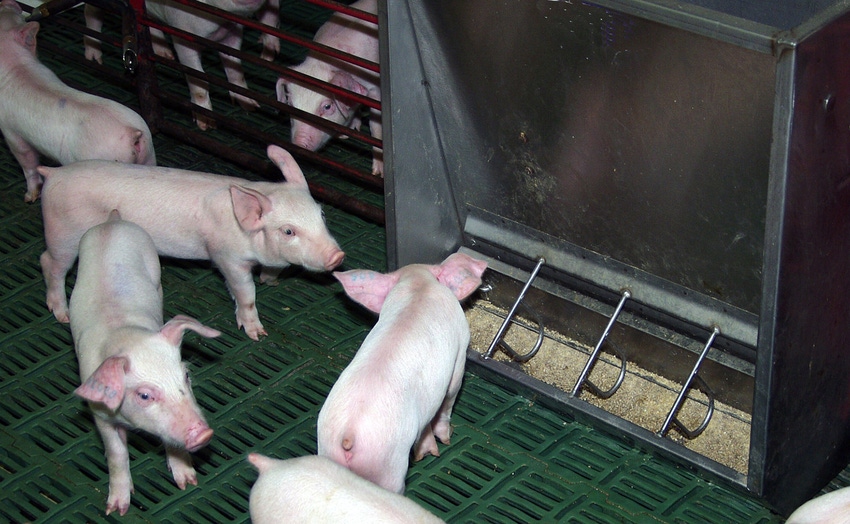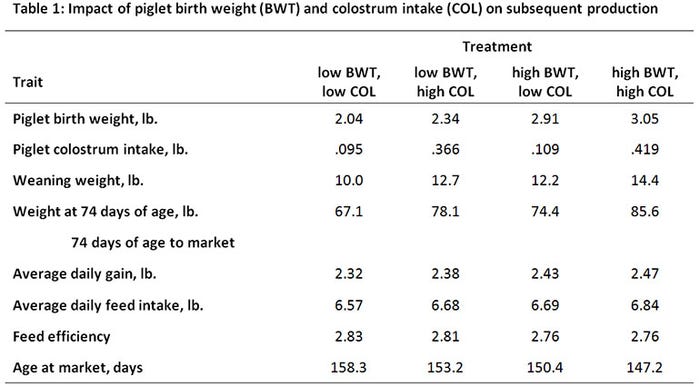While piglet birth weight and colostrum intake have a large impact on weaning and nursery performance, grow-finish performance can still be impacted by these early life factors.
June 7, 2017

By Mark Knauer, North Carolina State University
Many understand the importance of piglet quality on preweaning survival and growth. Yet piglet quality also impacts production throughout the grow-finish period. Hence the purpose of this study was to quantify the importance of piglet birth weight and colostrum intake on grow-finish growth rate and feed efficiency.
Data from the study were collected at the North Carolina Department of Agriculture Tidewater Research Station near Plymouth, N.C. At birth, piglets were individually weighed. All pigs were again weighed at 24 hours of age. Colostrum intake was estimated as 24 hour weight minus birth weight. At 74 days of age, 448 pigs were assigned to treatments based on birth weight and colostrum intake in a 2 × 2 factorial arrangement. Pigs were housed eight per pen (8.4 ft2 per pig) in a building with natural ventilation. Pen was the experimental unit. The test period ended when average pen weight reached approximately 265 pounds.
The impact of piglet quality characteristics on subsequent production is reported in Table 1. By 74 days of age, large differences in pig weight were present between treatment groups. Pigs from the high birth weight/high colostrum group were 18.5 pounds heavier than those from the low birth weight/low colostrum intake group at 74 days of age. By market, the weight difference between those two same groups increased.

Differences between groups in feed efficiency were driven mainly by piglet birth weight. Pigs that were heavier at birth had improved feed efficiency during the grow-finish phase. This is supported by past studies. Yet high colostrum intake appeared to enhance feed efficiency in low birth weight piglets, but not high birth weight piglets.
What does this data mean for your production system? While piglet birth weight and colostrum intake have a large impact on weaning and nursery performance, grow-finish performance can still be impacted by these early life factors. Hence cost-effective strategies that enhance piglet quality will ultimately boost grow-finish output and efficiency as well.
Special thanks to the staff at the NCDA Tidewater Research Station for their continued help and support. Questions can be sent to Mark Knauer.
You May Also Like



